
Mazda CX-5 long-term test

Update 1: Welcome
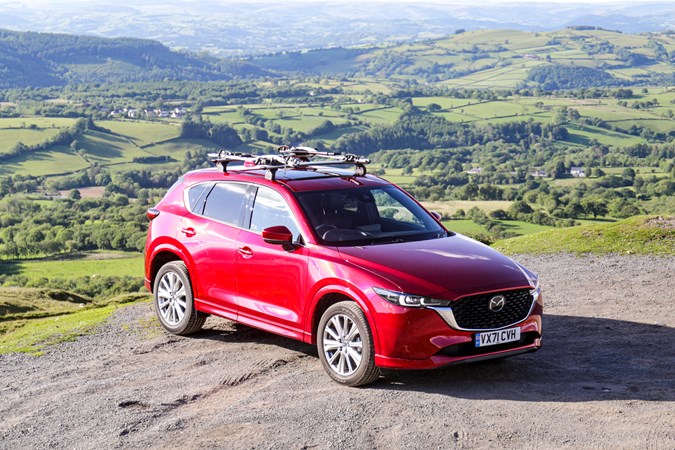
Many millennia ago when I was relatively new to the Parkers team I ran a Mazda CX-3 long-termer, and it was excellent. Other than the gearknob that used to twist in response to an energetic shift, and the doors that sometimes didn’t close properly, it was flawless.
Back then you could get away with padding out a report with words like Kodo design, Soul Red paint, and maybe even right-sized engine to sound edgy and informed. These were new and shiny concepts that defined what the Japanese manufacturer was offering, and how that differed from everyone else.
Fast forward to 2022 and while those things have been subtly updated – the styling is even sharper, the lustre of that paint even deeper, and the engineering just as belligerently simple – I’m surprised at how similar the CX-5’s offering is to my old long-termer.
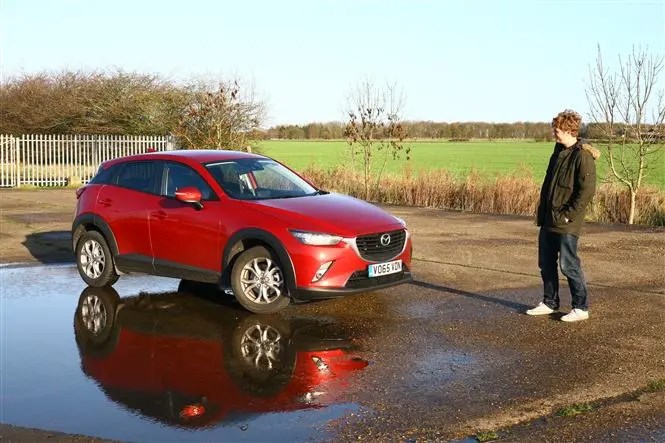
Back then, Mazda stood alone when other manufacturers were moving to small, turbocharged engines by sticking with larger, naturally aspirated ones. Since then, the game’s moved on and now everyone else is offering downsized units with turbos and hybrid electric power, while the CX-5 still has a large, conventional one. So again, it sticks out for being different, but it’s the same difference as seven years ago.
That seems odd because we live in a culture of constant product revolution. Compare a current VW Golf to one from 2015 and every single bit of it will be different – even the badge on the nose has been redesigned. Try to charge a phone from 2010 and none of your cables will fit. Netflix used to arrive in the post. Etc.
So maybe it’s this industry norm as a whole that Mazda continues to challenge, the constantly reinvented wheel rather than the individual changes the wheel has undergone. When you think about it that makes sense – if your transportation needs haven’t undergone a radical overhaul since you last bought a car, then why should the car itself be radically different? Back in 2015 I liked the things that made the CX-3 different, and I like them even more in 2022 after seven years of refinement.

Thing is, my transportation needs have shifted somewhat in the years between. Namely, I’ve had a second child and swapped hobbies from running to cycling in order to preserve what’s left of my knee cartilage. Both of these things require exponentially more stuff, particularly the latter (running famously requires almost no kit – in fact the less you wear the better) and so the one change I will admit to needing is more space.
Often the shift from small to medium SUV comes with a disproportionate drop-off in handling. Somehow a car that is barely 1.5 times larger manages to be two or three times less fun to drive. But a Mazda badge comes with an unspoken reassurance that you will enjoy your time behind its rule-breakingly thin (and round!) steering wheel, and so it is in the CX-5.
To that end, I’ve been given a top-spec GT Sport model (which until this year was my favourite Playstation game) and that means all sorts of spicy upgrades, like driver modes and gearshift paddles behind the wheel. Inside you get Nappa leather and wood trim, outside you get body-coloured bumpers and 19-inch wheels.
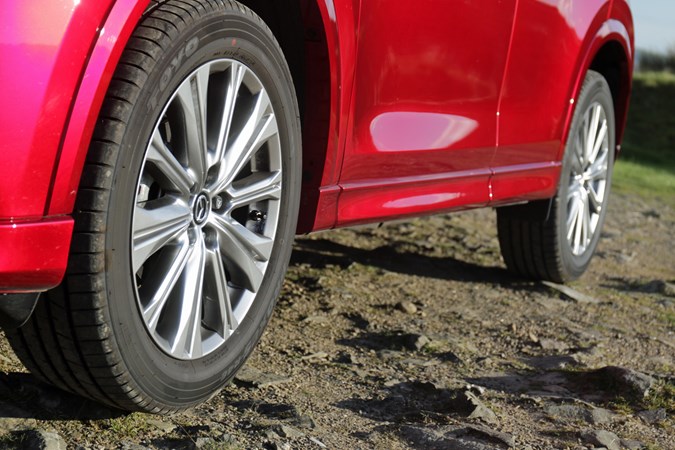
This spec is also the only one with access to the 194hp 2.5-litre petrol engine, which comes with an automatic gearbox and all-wheel drive whether you want them or not. That’s not a traditionally frugal combination when it comes to running costs and so I’ll be hoping the official 35.3mpg Mazda promises is on the pessimistic side.
Otherwise my first impressions are very good – I’ve always thought Soul Red is the most eye-catching paint you can get on a mainstream car and this latest generation (Soul Red Crystal) is even more high-definition than before. It’s actually really hard to photograph, looking unfairly flat in all my pictures, but in real life, it does a great job in showing off the CX-5’s attractive styling.
It’s a similar story inside, where Mazda has really pulled ahead of rivals like the Nissan Qashqai, Kia Sportage and Ford Kuga, with a simple and ergonomically laid out cabin and a good number of physical buttons for things like the climate control and sat-nav.

That might seem a bit old-fashioned and to be honest, it’s just the tip of that iceberg – while all things are subjective, I think the big clunky, mechanical gearshift lever has run its course now, replaced by almost every other car maker with a smaller electronic one. Having to shift all the way to “P” every time you come to a stop feels distinctly old school these days.
Same story with the rotary controller for the media system and non-touchscreen, which still gets fingerprinty because my passengers assume, as with any other screen, that they can jab at icons on it to get the desired effect.
So whether or not the CX-5 is a snapshot of car design in its prime, a high watermark that has been captured at its peak and preserved for future generations, is to be seen. As is the effectiveness of that large, unstressed engine, which promises to be a simpler and more reliable route to cheap fuel costs than my last two cars, which both had plug sockets. Over the next six reports, we shall find out together.
Update 2: Performance and handling
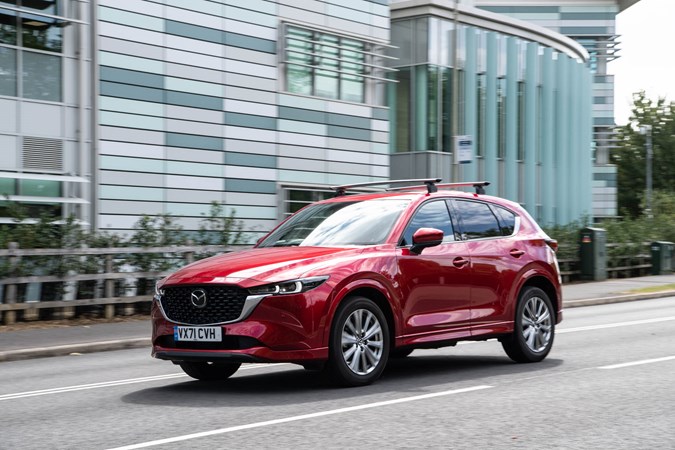
I’ve delved way back into the Parkers archives for this report, to gain a bit of historical context into how my CX-5 drives and steers, and its evolution since the last Mazda SUV Parkers ran.
This meant going all the way back to pre-covid 2018, The Before Time, when I was able to easily secure a stint in Chris Lloyd’s long-termer CX-5 because we all worked in the same office, and I could lean over and say “Chris, give me the keys to your Mazda”.
I remember it steering nicely but possessing a firm ride that didn’t seem to fit what had been pitched as a family SUV. Chris’s insights include a fondness for the punchy diesel engine but disappointment in the amount (or lack) of front-end grip.
He also mentions that this wasn’t an issue in the all-wheel drive version he’d driven previously, and that brings me onto the main point of this update – because my car is AWD, and it has way more grip than power.
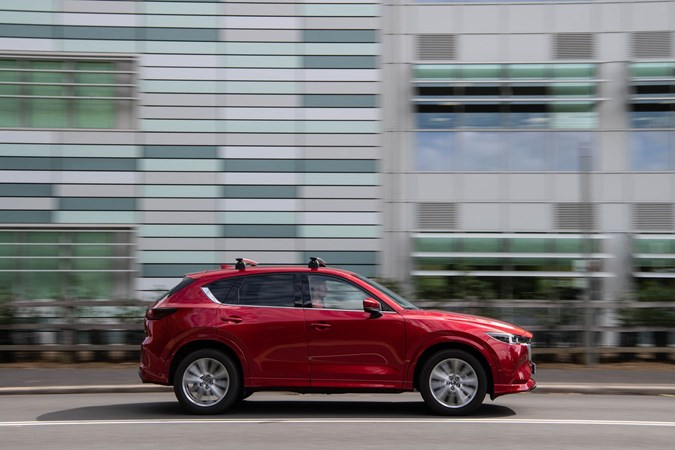
This is a direct result of two things – firstly, an abundance of traction, and secondly, an engine with a somewhat gentle power delivery. This is a bit of a Mazda hallmark – since the legendary Mazda3 MPS hot hatch died a death, its engines have all been on the lower-powered side.
That’s largely down to their configuration. Unlike many rival SUVs like the Nissan Qashqai, Kia Sportage and Ford Kuga it features a massive, non-turbocharged petrol engine. As a concept, this is very unusual these days as car manufacturers turn to smaller and smaller engines with big turbos in order to meet strict emissions regulations.
Boosting the punch of a diminutive motor with a big turbo has a downside – the best performance is found in a narrow band. When accelerating from low revs the engine will feel weak, then suddenly strong, and then weak again before you change up a gear. This can result in a need to work the engine hard to make progress, and in return, rubbish fuel economy.
Mazda says the 2.5-litre, four-cylinder lump in the CX-5 is better in the real world because it doesn’t have to work as hard to provide the same performance. On paper it’s worse – 182g/km means raised eyebrows from your company car manager and 35.3mpg is a best-case scenario that even if you achieve, is a bit underwhelming.

So where’s the benefit? Well, it’s certainly not found in a blistering 0-62mph time, with my auto CX-5 taking 9.3 seconds. In fairness that’s not bad at all, but we’ve come to expect more than the 194hp this motor produces from an engine this size, especially when other car makers are easily getting more than 100hp per litre of displacement these days.
Where the CX-5 really excels is smoothness and refinement – it makes its power over a broad spread of revs and so when you want to accelerate, very rarely does the eight-speed automatic gearbox feel the need to kick down.
When there is a need to change gears there’s no noticeable drop in power, but I have found the CX-5 holding onto a higher ratio than I would like in “Normal” mode. Things get punchier in “Sport” mode and there are paddles behind the wheel if you want to fully take over control. For normal driving, I find it works just fine left up to its own devices, though.
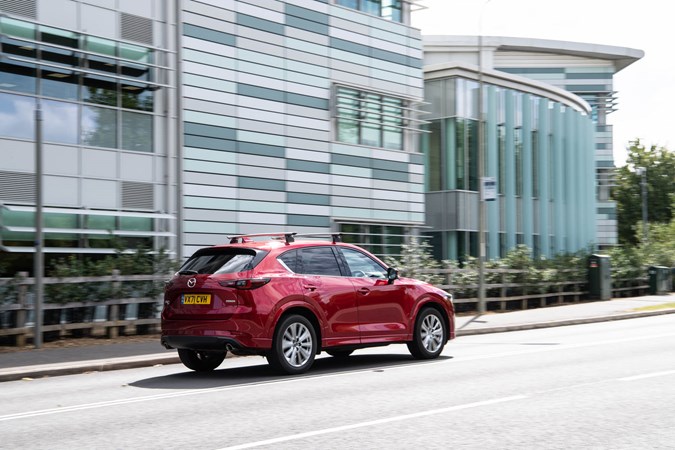
The steering is pretty much how I remember it too, with a thin, round rim that sits at odds with the massive D-shaped items everyone else seems to be using. It feels like it’s come from an MX-5 sportscar and this sets high expectations of how the car will handle.
Luckily it’s able to back this up – the CX-5 in this specification is a lot of fun to drive, with some of the smaller MX-5’s simplicity when it comes to its chassis. There are no clever adaptive dampers here, just a nicely set-up ride that is softer over bumps than I remember while still resisting body roll in a corner.
In all honesty, though the Mazda is still one of the firmer riding SUVs you can buy, and while its fast steering makes it feel agile, a kerb weight of 1735kg (including driver) isn’t particularly impressive, but it’s worth remembering this model has AWD, an automatic gearbox and a massive engine weighing it down.
The way the four tyres hold onto the tarmac is very impressive, and Mazda’s clever traction control system feels like it’s working with you rather than just cutting the power when you reach the limit of that grip.
It’s just a bit of a shame really that it doesn’t have a bit more oomph to match that keen chassis. One thing I will say though is whoever decided to engineer a five-cylinder-like soundtrack into the engine bay is alright in my book.
Update 3: Practicality and bike carrying ability
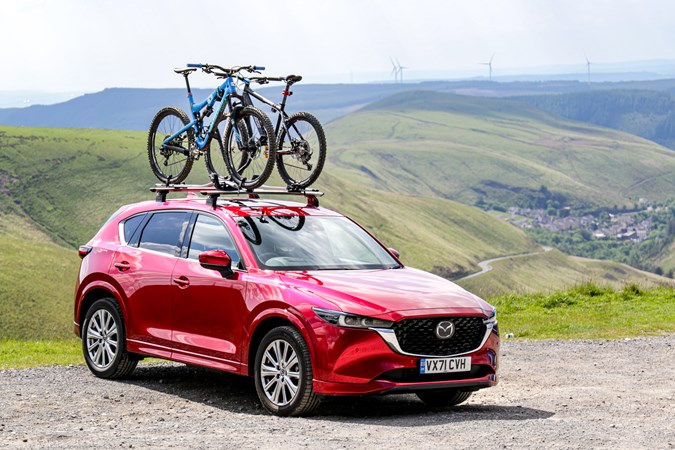
You don’t buy a big SUV like this unless you need interior space – so while handling and styling are top of the bill for the Mazda CX-5, a decent boot and locations to store things inside the car are nudging towards equal importance.
I have two kids and some very bulky hobbies, and therefore I don’t have to try too hard to put a car like this through its practical paces. I also think I’m pretty reflective of the target market for this car, so it needs to fit into my life for it to be deemed a success.
The first point to make is that the 510-litre boot is just ok, while the 1,626 litres it offers with the seats flat is quite impressive, and this says a lot about the balance of luggage and rear cabin space Mazda has chosen. Basically, the latter over the former.
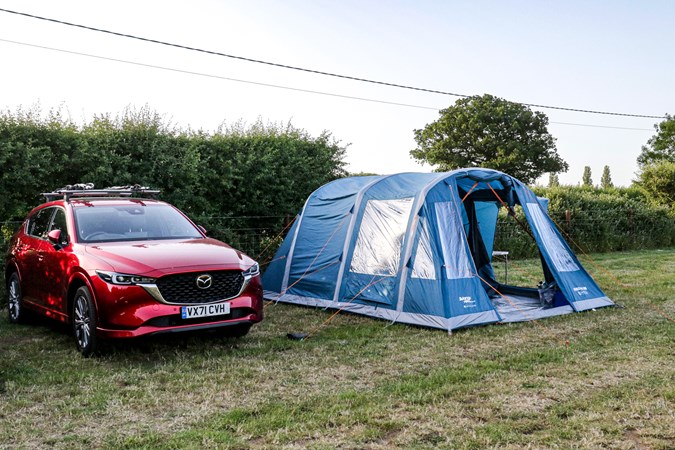
That seat-up figure also takes into account the underfloor storage, which in my car is full of Bose stereo (excellent, if a little light on bass, FYI) and the two little cubby holes on either side. Fine, until you have people in the back, and then it feels a bit light on space.
Also, this is a niche complaint but there are no high-level hooks for hanging my mountain bike helmet from (or perhaps a shopping bag) so I’ve resorted to clipping it through the levers that remotely drop the rear seats. I did this with my motorbike helmet too and the extra weight pulled on the lever and caused one of the seats to unexpectedly fold while I was driving. So I don’t do that anymore.
What is quite nice is the fact that not only can the powered boot lid be remotely opened from inside the car (this is not groundbreaking) but you can actually close it by pressing the same button down by your right knee. I don’t think I’ve driven another car that does this, and I don’t want to exaggerate but it’s a game-changer for the chronically lazy. More importantly, the tailgate doesn’t lift high enough for me to not bang my head on, so the less time I can spend there the better.
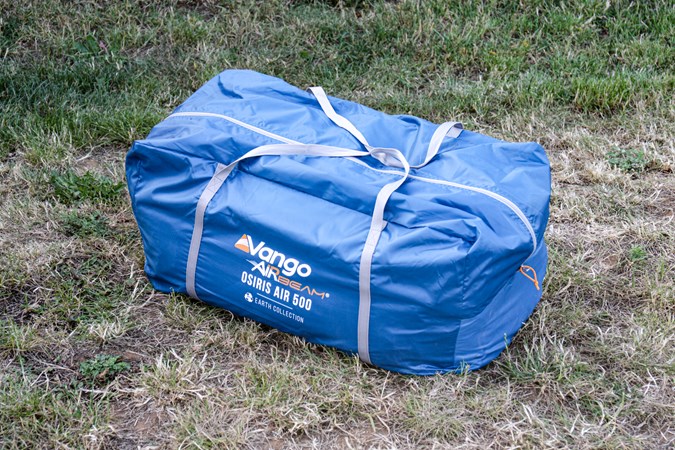
When it comes to outright capacity though the CX-5 falls just short of being big enough to take anything you’ve got like you get with a large estate car. So much so that when we went on a four-day camping holiday with the kids, we had to bring my wife’s car along too.
Partly that’s down to the absolute skip load of stuff my family seems to need to survive a few days outside the house, in addition to our accommodation taking up well over half the boot – but it’s only a five-person tent (read: big enough for two adults and two kids) and I don’t think that’s unreasonable. Long story short, get a roof box if you like camping. Or a roof tent.
Of course, to do that you’ll need roof rails (£225, from Mazda) because the CX-5 as standard has a completely smooth roof. It looks great but it’s not hugely practical, and so I found myself on the way to Mazda’s head office in Dartford to have them fitted.
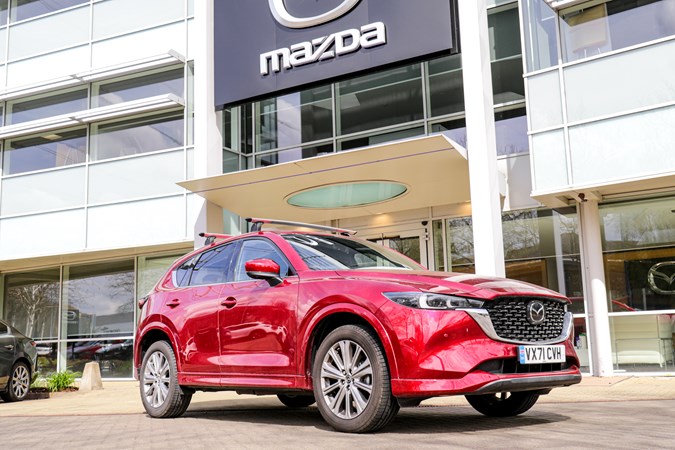
In fairness, it’s not a hugely technical job (we documented them being fitted to Chris’s CX-5 long-termer if you want to see the process) and I like the fact the horizontal bars fit directly to the car, rather than to an existing pair of vertical rails. They look very neat.
I reckon I was there for about 20 minutes while the bars were fitted and since then I’ve seen a 2/3mpg drop with them on. Chris said at the time his diesel CX-5’s fuel economy dropped by about 25%, which seems an awful lot, although the bars he had then were a lot chunkier than these slim aero numbers.
This also meant I could attach the T-slot Thule bike carriers I used extensively with my Skoda Octavia vRS Estate, and these have lived on the roof ever since. Like with the Skoda, every time I think about taking them off, I make plans for another bike ride, so I’ve just resigned to leaving them on.
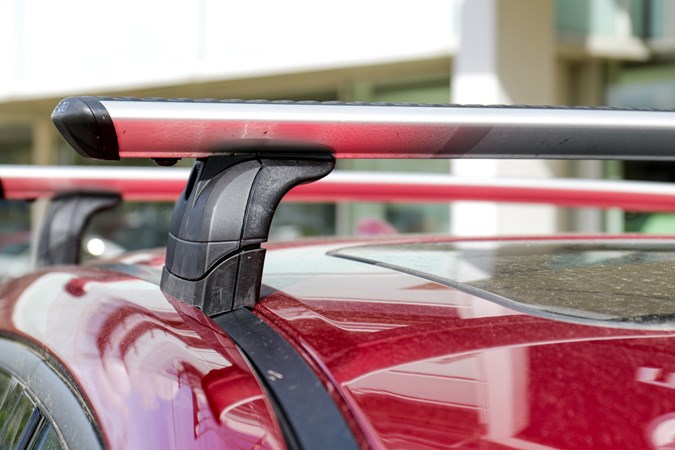
Unfortunately, the compromise here is having to put up with quite a lot of extra wind noise – weirdly it sounds almost exactly the same as a whistling stove-top kettle. Even weirder is the fact that it gets significantly quieter if you close the sunroof blind. I assumed it was made of thin plastic, but apparently, it’s constructed from the same material you see lining music studio walls.
On a long haul to south Wales for some much-needed airtime at my favourite bike park, I just drowned out the noise with loud music, which the aforementioned Bose is happy to provide. As time’s gone on I don’t really hear it anymore, it’s been tuned out in a way I wish I could replicate with my tinnitus, but then I’ve been riding my motorbike a lot this year and frankly, any vehicle is quieter than that.
Previously I’ve used a tow bar bike carrier and this remains the best option in my book – less of a stretch to lift your bike onto, quieter, and no stress when it comes to going under height restrictions (or more likely drive-throughs).
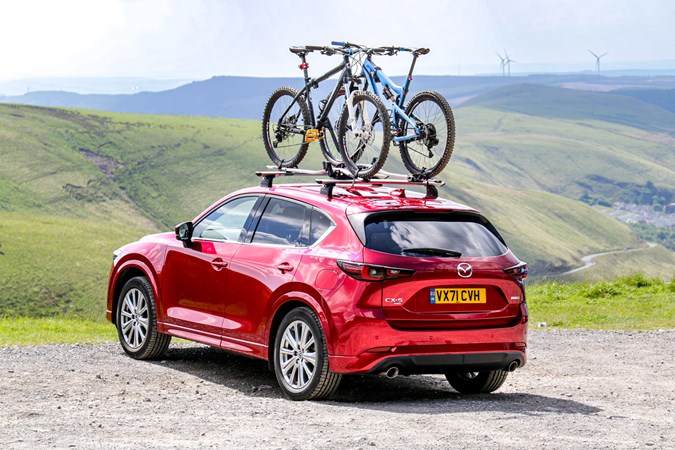
What else? Well, the build quality appears to be quite child-proof so far – the door handles are still attached to the car despite my youngest occasionally using hers as a makeshift chin-up bar, something most parents of primary school-aged children will recognise. The slim internal handles don’t look quite as capable when it comes to load bearing, but I’ve got the rear child locks on, so they don’t really get used anyway.
The door pockets in the back are pretty shallow although good enough for a bottle each, and the USBs for the rear row are hidden in the armrest, which my children flap up and down when they’re upset about something, so that’s a bit annoying.
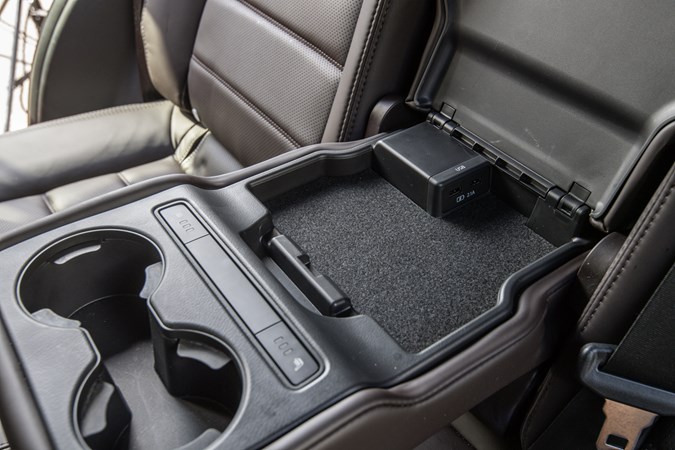
Up front you get a deep underarm box with two USBs and a 12v, then two cupholders in front, and finally a cubby box with no lid and a temperamental wireless charging pad. I think my phone case is too thick for it to work properly, in fairness.
Overall the CX-5 is pretty practical – it’s not especially brilliant or terrible, and you’ll need to bolt things to the outside of it if you want to regularly carry anything large or awkward. Spec yours with a tow bar and roof rails and there will be very few lifestyle activities you cannot take part in.
Update 4: Off-roading?
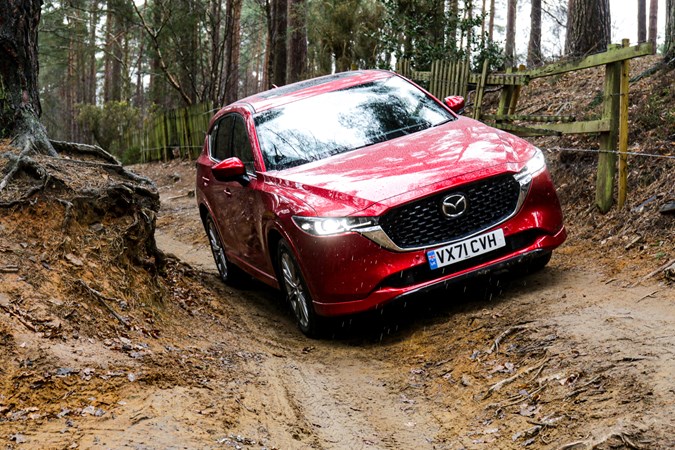
The first question you should ask yourself when going off-road in a Mazda CX-5 is “why am I going off-road in a Mazda CX-5?”. A modern SUV, even an all-wheel drive one, is about as likely to be driven on dirt as a Dakar racer is to see a double mini-roundabout.
And yet, here I am canted over at an angle on slippery, sandy mud, picking my way down a green lane like I’m leading an expedition into the true source of the Nile.
If all of this sounds like a spontaneous jaunt, I’ll bring it back down to earth by pointing out I pre-empted this adventure by making a phone call and then two emails to ensure I was allowed to drive down this track, which is more commonly used as a car park at a place I sometimes go and ride my bike.
Here’s where we find relevance too – I’m not one for attempting to bend the chassis of a loaned car for no good reason – but in order to fit into my life, this is exactly the sort of ability I require from a car. I like visiting this place and I can’t do that if I get stuck in the car park when it’s raining.
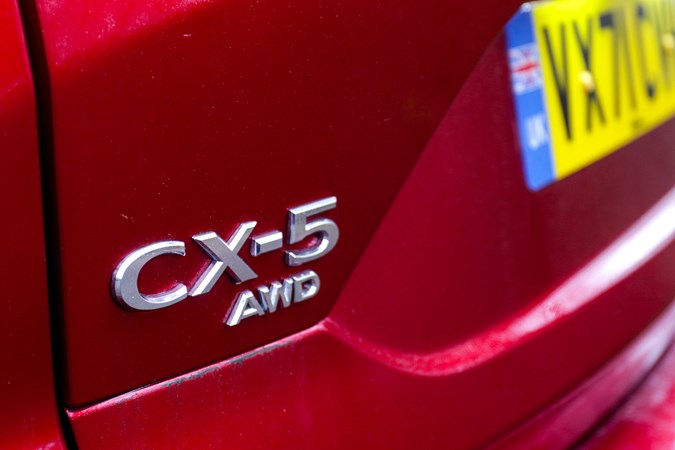
Case in point, for six months, when I ran an Audi A6 Allroad I drove here reasonably regularly and never experienced any issues, so I assumed it wasn’t particularly challenging terrain. Then I tried to do a three-point turn in a front-wheel drive Volvo XC40, heard the wheels spin, and suddenly realised I didn’t know anyone with a tractor.
People walking past started looking at me with an expression on their faces that said, “that idiot has got his SUV stuck on some loose soil” and I realised I was going to have to extricate the Volvo or retire from motoring journalism. Backing it up and straightening out, I was able to find a bit of grip and then basically solve the problem with a big clog of gas.
In fairness to that car, it was a two-wheel drive crossover on road tyres. Ignoring the boosted ride height, it was essentially a hatchback, so I got what was coming to me. The Mazda also has road tyres, but it’s all-wheel drive and has a special off-road drive setting, so it should be up to the job, right?
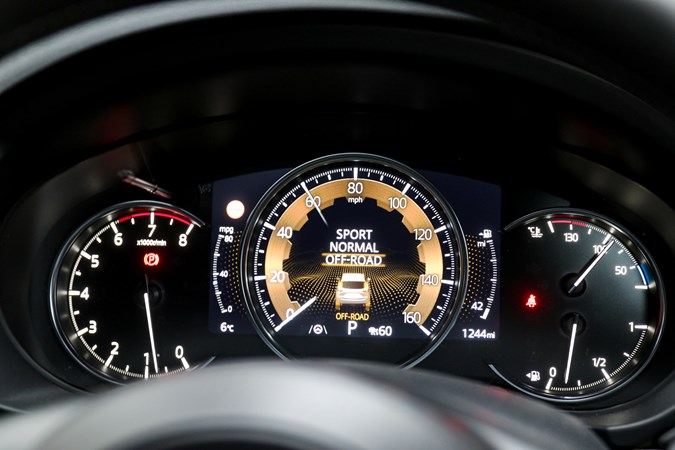
Said mode is unlocked by clicking the drive selector down to Off-Road (there’s only Normal and Sport to choose from, which is quite refreshing) and this basically backs the traction control off a bit so you can slip the tyres on a loose surface without it pulling the power plug and leaving you stuck.
With the top of the car park ably negotiated (and one-up on the Volvo) I ventured into slightly sketchier terrain, where the Mazda’s tall suspension provided ample clearance, and the tall-sidewall tyres held onto the gritty surface without a hint of wheelspin.
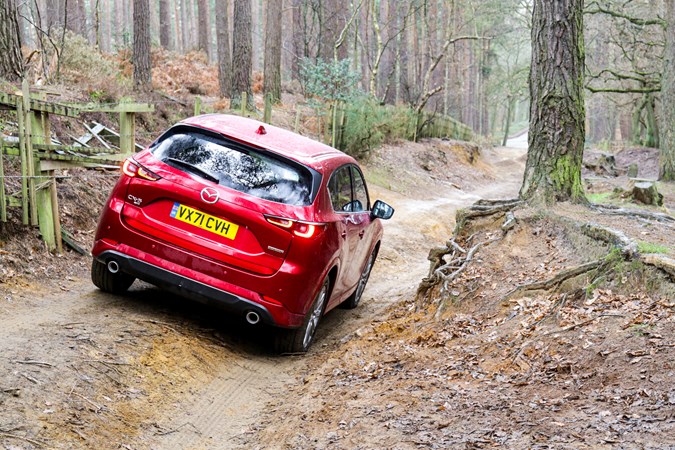
An automatic gearbox makes life off-road a lot easier because it’s one less thing to think about, and you can maintain slow and steady progress without bogging the engine down and stalling or revving it until the valves hit the inside of the bonnet. The six-speeder in the CX-5 is super smooth and held the engine at a point where it could deliver the punch needed to climb out of a steep bombhole without the need for a rushed downshift.
Banked over at an angle the CX-5 felt surprisingly stable and resisted crabbing sideways into a gnarly-looking exposed tree root ball. Further down the ratio of sand to mud shifts dramatically towards the former and this way the only point where I felt a slight loss of traction.
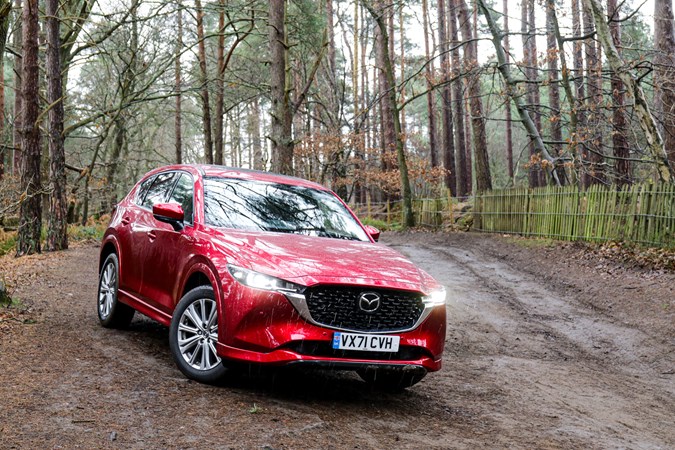
Moments later I saw a modified Land Rover Discovery drive up the hill at a speed I reckon you could only measure in Warp Factors and it kind of took the shine off the CX-5 performance. But in reality, I’d got an answer for the question I’d set out to test – can this Mazda SUV cope with the terrain that some of my stupid hobbies require me to drive down? And the reply was a resounding yes, and then some.
Knowing the limit of ability was beyond what I’d realistically need even in the most remote mountain biking locations makes me confident I can get where I’m going, and then back out. I parked in a field for a music festival a couple of weeks later and only considered whether I’d be able to get back out again if it rained when the downpour came and left a sea of stuck hatchbacks spinning their tyres fruitlessly into the dirt. The Mazda was fine. And I helped push a load of people out, before you ask.
Get the all-wheel drive version if this looks reflective of your usage though I reckon, the tyres are always going to be the limiting factor and you give yourself twice the chance of getting home if they’re all driven.
Update 5: Interior brilliance
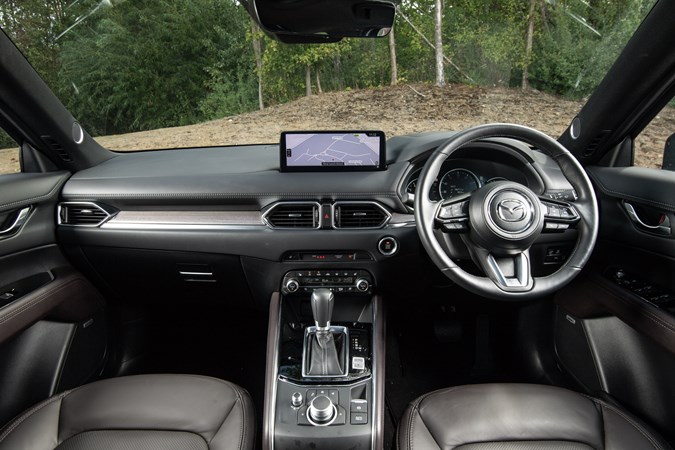
This is the area I think the Mazda CX-5 will prove most surprising (not to me because I’ve driven one before) but if you’re new to the brand and fresh from say, a Ford Kuga test drive, then prepare to be impressed.
I say that, but like all things designy the way a car’s interior looks is largely subjective and you might hate all the things I like, plus sometimes those reasons are intangible, hard to describe and impossible to photograph. So it’s not easy to explain, is what I’m saying.
But I think there are a number of very objective ways in which the CX-5 is brilliant that I will set out in this update.
It mixes old and new
An analogue rev counter and digital speedometer is the best combination and I won’t be taking further questions. The elegant sweep of a crisp tacho needle next to an information-rich screen is as evocative as it is user-friendly. Also, it looks cool.
Other car makers use a huge digital screen behind the wheel for the sake of it and often fill the space with a poorly sketched rev counter rendered in pixels. Why not just put the real thing in?
Button fans will also find themselves in an ergonomic and distraction-free space – I can’t tell you how much easier it is to sightlessly reach out to a heated seat button and activate it without taking your eyes off the road. And I’ve just realised I sound like my Dad.
Build quality and craftsmanship
This is one of those hard-to-get-across points but the gaps between all the bits of trim are razor thin. Under normal running conditions, you might not notice a narrow panel gap, and arguably that’s kind of the point, but there isn’t a single crevasse across the whole dashboard, so it looks like a single homogenous item instead of lots of things nailed together.
The stitching is very neat too, and the grain of the wood-a-like panels lines up, and there are some perilously thin-looking bits of trim that look like they’ve been inserted with tweezers like you see posh chefs do with micro cress.
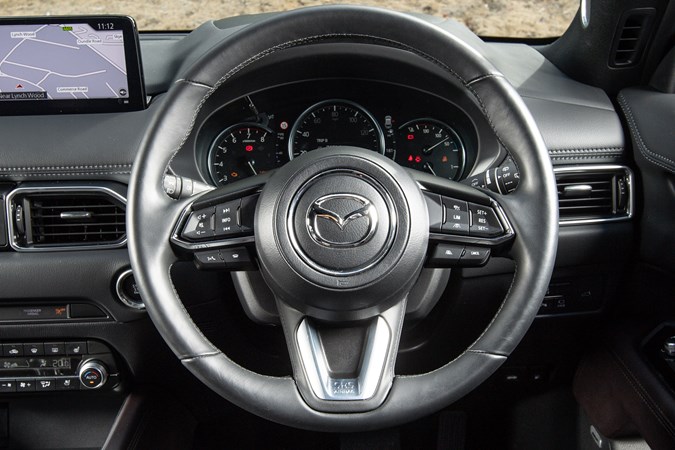
As a result, the impression the CX-5 gives is one of solidity – or in a less pretentious description, it looks like it’ll last ages and not fall apart when you hit a speed bump a bit too vigorously, because the person who put it together knew what they were doing. The opposite of all my Ikea furniture, basically.
Use of light and shade
When piano black trim became “premium” everyone started using vast swathes of it in their cabins and suddenly it wasn’t premium anymore. It’s used because it’s a dark surface that disappears from view when you’re not looking at it, making the dashboard look less bulky, but because it’s reflective you don’t end up with the ambience of a dingy nightclub toilet. The CX-5 has a sparing surround here and there.
But the really clever thing is the contrasting use of silver trim around things you commonly need to find easily – the air vents, the gear shifter and the start/stop button for example.
As you can see in the image above, the use of darker trims helps large parts of the dash recede away in your peripheral vision, isolating the bits you need in an almost floating island of functionality. I know this sounds like nonsense but it’s true. Maybe try squinting at the picture a bit.
Ergonomic and easy to use
Some cars take a few thousand miles before you can comfortably use all the controls, some are so complicated that features lie dormant in menus, untouched by a human hand until obsolescence. Then there’s the CX-5, which I knew how to work by the time I left the Bauer car park.
A rotary controller driving a non-touchscreen might sound like the sort of infotainment Noah rocked on the ark, but it works so much better than having to stretch halfway across the cabin, to jab at tiny on-screen buttons with no hand rest. And then spend your weekend polishing fingerprints off it.

But it’s not just this, everything is within reach (save for the heated steering wheel button, inexplicably positioned on the passenger side) and operates with a positive click so you know when you’ve hit it. Attempts have been made to replicate this experience with haptic feedback touchscreens and they’re wide of the mark, even now.
Everything is very soft
As a rule of thumb, if you poke something and it’s not a button or switch, it’ll be like squeezing a marshmallow. I don’t know why this is so satisfying but it is. Essentially if you reach out to hit a control and you prod something squashy, you’ve missed and hit the dash. Or your passenger.
Surely it’s not all good?
No, it’s not, sadly, but I think the things that irritate me about the CX-5’s interior do so because the rest of it is so good. The bonnet release and fuel filler flap buttons are very close together and not lit. I haven’t popped my hood in a Shell forecourt yet but it’s only a matter of time.
You can deactivate all the window controls except for the driver’s by pressing a button on the door. Normally this function allows you to still raise or lower those windows from the driver’s controls but weirdly pressing this button in the CX-5 stops them from working there too. I recently drove a Mazda CX-60 and this slightly odd issue has been rectified, so clearly it’s been pointed out before.
Finally, while the rear headroom is very good, legroom is a bit there-or-thereabouts. As a tall person riding in the back, I find this compromise better, because you can always ask the front passenger to move forwards a bit, but you can’t raise the roof. But this might not suit you, of course.
At the start of this long-term test I assumed you’d buy a CX-5 because of the way it drives. Increasingly I’m thinking it’s a style-led decision and on the back of this interior, I don’t blame you for making that choice.
Update 6: Farewell, the end of the road
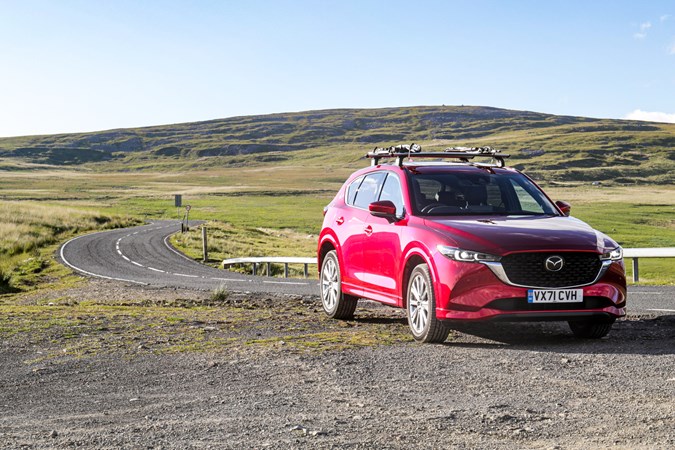
It’s time to wave goodbye to the Mazda CX-5 and I’m sadder than I thought I would be. That sounds too much like I’m damning it with faint praise, so I’ve set aside a bit of time to get to the bottom of my final thoughts for this car.
This SUV does a lot of things very well – to the point where I didn’t really think about it doing them, and in a lot of ways, I took its talents for granted.
I’ve had faster family cars and I’ve had more comfortable ones, I’ve also had some that handled better and others with more space, but few that put such a big tick in all of those boxes as the CX-5 does.
But really I think the thing I will miss the most is how absolutely brilliant it looks (when it’s clean) both inside and out. It’s been a while since I had a car that got this much attention from strangers – from the school run to random forecourt encounters, lots of people seem to like the way the Mazda looks.
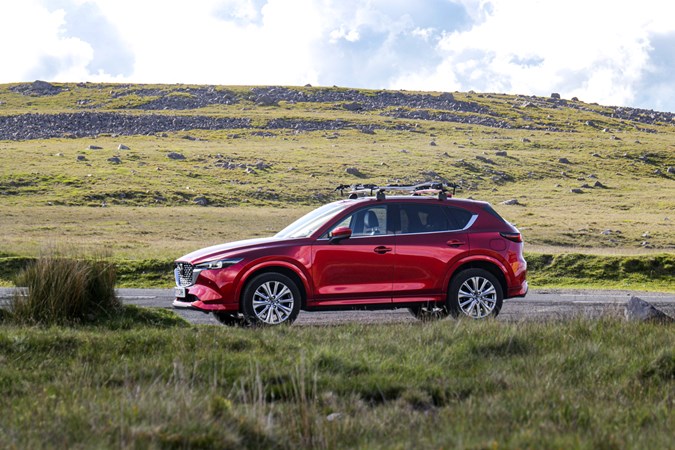
In part that’s down to the styling but a huge contributing factor is the still-sublime Soul Red Crystal paint. Just a shame it’s so soft – I’ve spotted a few dings and scrapes that can only have been caused by stones on the motorway or people brushing past it in a car park. I think I’d get some of that protective film fitted from new if I owned this car.
It’s also very satisfying to drive a modern SUV that manages to handle and ride nicely on normal suspension, which doesn’t require fiddling with modes to get the best from. I can’t say I frequently made the most of the direct, linear steering and supremely grippy all-wheel drive with my kids on board, but on rare moments where I found myself driving alone, it certainly impressed me.
I’ve said this before but I think my family get on better with a slightly firmer ride anyway – the only times my kids have been sick were in wallowy, rolly-polly air-suspended cars. A by-product of the Mazda’s excellent body control is fewer instances of nautical-based nausea in the second row.
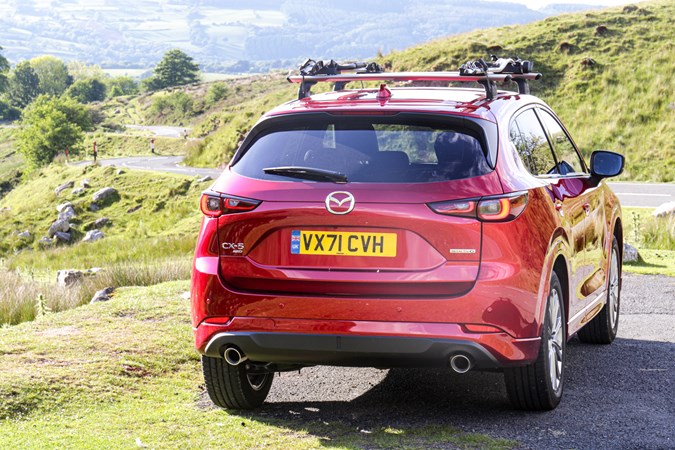
The engine did the job – it wasn’t particularly fast or exciting, and in reality, it was quite thirsty (I averaged 30mpg over my six months, but bear in mind most of that time I had a roof rack attached). It had enough power for day-to-day driving and could get up to speed on a short slip road with no bother.
I still think a big diesel engine suits this sort of car better. Effortless fuel economy and bottomless low-down power make life much easier, especially when you’re loaded up with family members and their associated junk in the trunk.
But as that’s not really an option these days, the 2.5-litre petrol engine in the CX-5 at least feels like a better alternative to a plug-in hybrid. It’s simpler and less of a fuss to live with, plus if you do a lot of motorway miles, unlikely to be significantly more expensive to run. I’ve also forgotten how much smoother a naturally aspirated petrol is, with no sudden wave of turbo power or clunky switchover from electric to internal combustion.
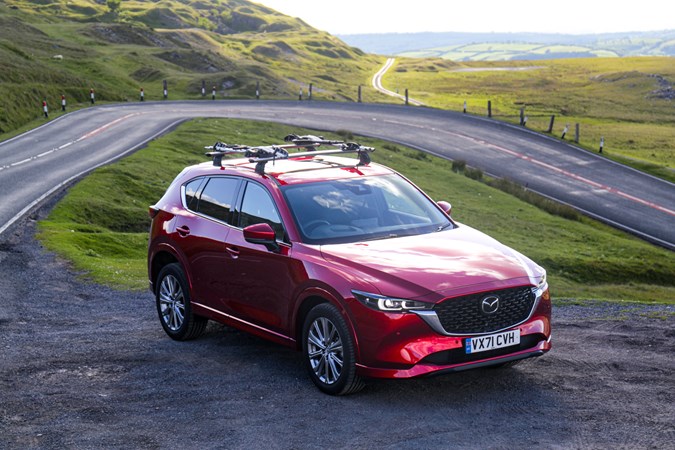
Practicality was a bit so-so, big enough for most regular activities but falling a bit short when we wanted to go camping or ride all four bikes at once. On the flip side the car’s relatively small footprint meant it was never an issue to thread down a narrow lane or slot into a parking space.
And so to try and bring this to some sort of conclusion, I will miss the CX-5 because of the way it looks, the way steers and how the ergonomic and easy-to-use interior actively removed stress from a long drive. It’s also very well equipped at this level and any practicality concerns can be overwhelmingly alleviated by speccing a tow bar or fitting roof rails.
Yes, Mazda is still doing things differently from the way they did when I last spent six months in one of their cars, and as time goes on their argument for doing so seems even clearer. Grab one now if this appeals – you won’t be able to for much longer.
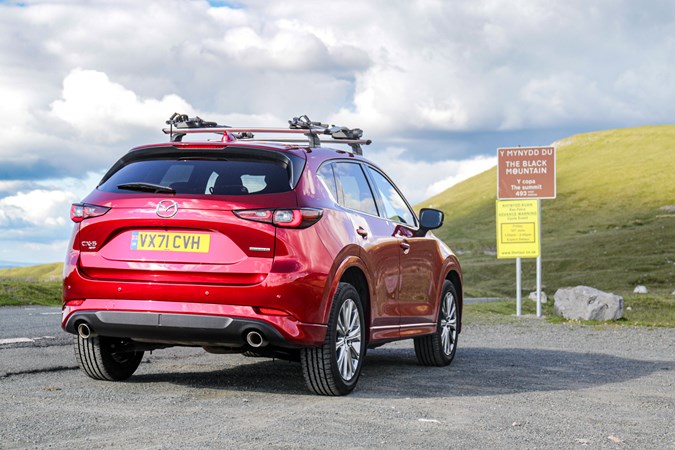


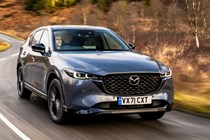
.jpg)
.jpg)
.jpg)
.jpg)
.jpg)
.jpg)
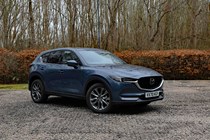
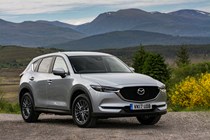
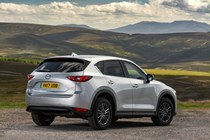
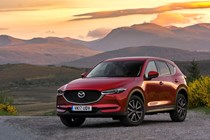
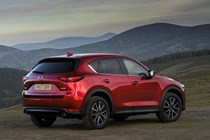
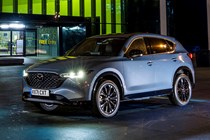
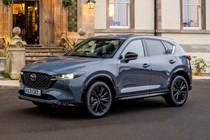
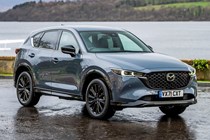
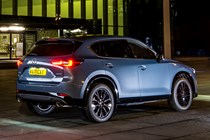
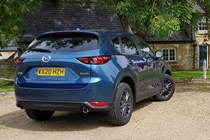
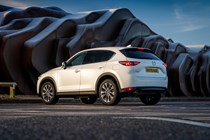
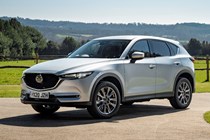
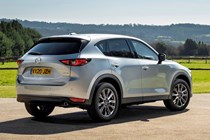
.jpg)
.jpg)
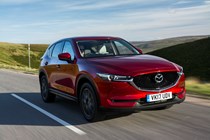
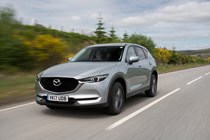
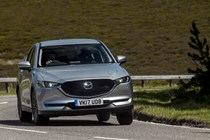
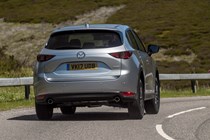
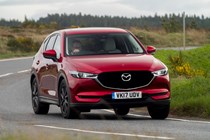
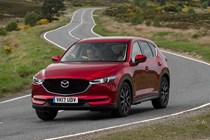
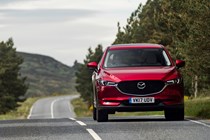
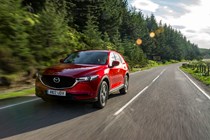
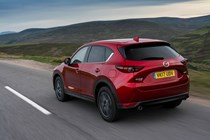
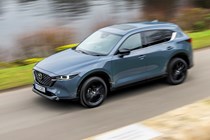
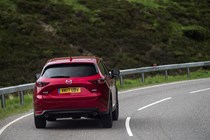
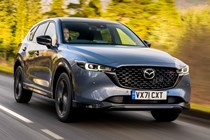
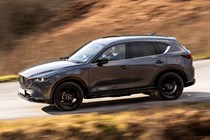
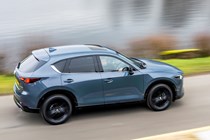
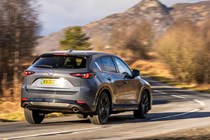
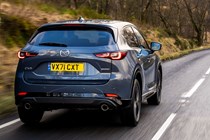
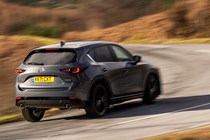
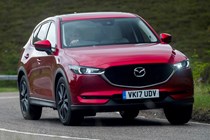
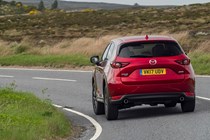
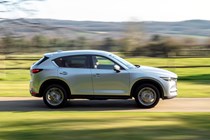
.jpg)
.jpg)
.jpg)
.jpg)
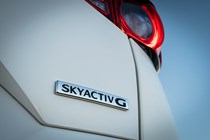
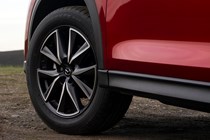
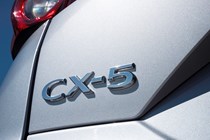
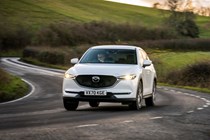
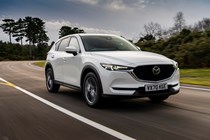
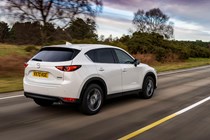
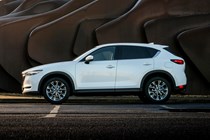

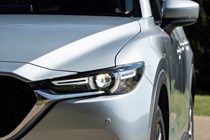
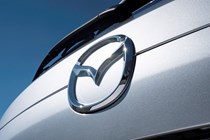
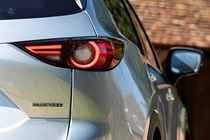
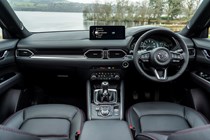
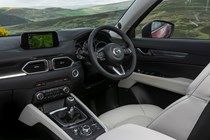
.jpg)
.jpg)
.jpg)
.jpg)
.jpg)
.jpg)
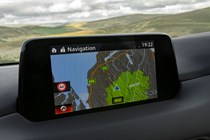
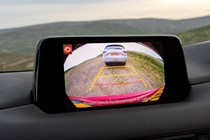
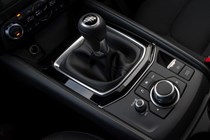
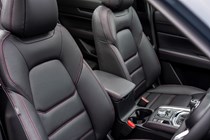
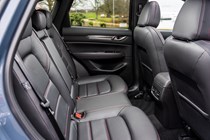
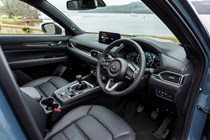
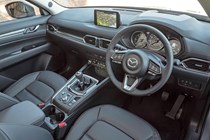
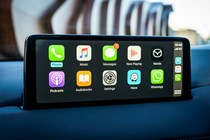
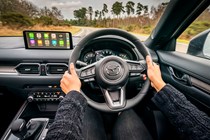
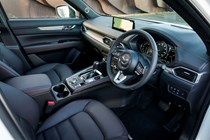
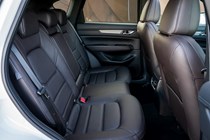
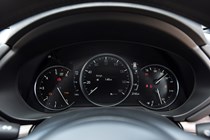
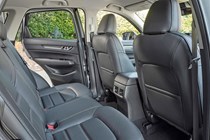
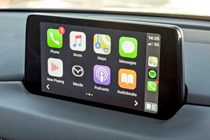
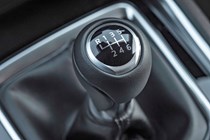
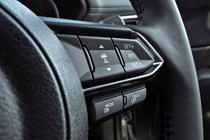
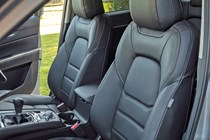
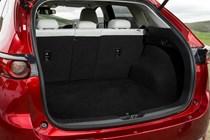
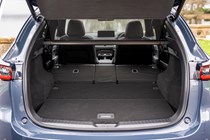
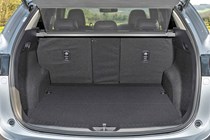



.jpg?quality=50)
.jpg?quality=50)
.jpg?quality=50)
.jpg?quality=50)
.jpg?quality=50)
.jpg?quality=50)













.jpg?quality=50)
.jpg?quality=50)




















.jpg?quality=50)
.jpg?quality=50)
.jpg?quality=50)
.jpg?quality=50)













.jpg?quality=50)
.jpg?quality=50)
.jpg?quality=50)
.jpg?quality=50)
.jpg?quality=50)
.jpg?quality=50)



















